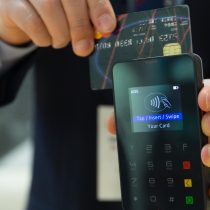
*Restaurant, Retail, Office, Salon, Online Warehouse, You get the idea, right?
An brief and easy to follow Buyer’s Introduction to and current Epson Thermal POS Printer Options for Everyday Business Needs: Part 1
Step 1: What are you trying to do?
The first place to start when searching and shopping begins, is to assess what your current POS printer needs are and, if relevant, what the current model is that you are using for your business needs. If you do not have a current printer model to comparison shop with or are not sure what device is best suited to your needs, your first step will be to contact your Operating System(OS) provider tech support (i.e. Toast, Oracle/Micros, Opera, Upserve, etc.) or look up on their website which devices are currently compatible with the most recent version of the software you have installed on your computer. There are thousands of software options for businesses and though your hardware needs may seem simple or obvious, you can save time, shipping, and frustration by checking in with your provider before you begin researching and shopping. Work smarter, not harder.
Epson is one of the leading manufacturer’s of thermal printers in the US at this time and the technology can be as simple to incorporate as downloading the Epson Driver to your computer, adding the device to your system, plug it in and turning it on. Some many have more steps for syncing when there are Wireless, Bluetooth, and Ethernet interfaces. And the ‘how to’ for many of these processes can be found on our Beagle Hardware support page.
Step 2: What do you know?
Identify which printer you need that is currently compatible with your operating system software. Upon doing this, you now have a starting point. Many folks call in and start verbaling any and all of the numbers they can read on their existing printers assuming we will magically know exactly everything from that jumble.
Reading your printer tag can tell us what the model/brand is and the serial number of your device which is helpful when you are calling in to the manufacturer or working with warranty related services. What it does not tell us on the other end of the phone is what type of connection you use to connect your printer to your terminals. This is how your device talks to other devices and is key to buying the correct printer on the first try. The interface card is an interchangeable part on many printers and can be as cheap as $19.99 and with current technology as expensive as $189.95 for wireless connections. Using our support page previously listed you can turn your printer around and compare the images of different interface types and see which one matches your existing connection.
Now that you have found the image of your interface card, you have the basics needed to find an exact replacement. From this point you can directly find and purchase your identical product assuming it is still in production and be done with your task. But what if your machine is no longer being produced? And what if you don’t know what the next logical step is for your business? Is it time to replace with an older but reliably refurbished identical machine or upgrade your device to the most recent compatible machine being put out there and avoid repeating this task for another 5-10 years? Tough call and unique to each business and its current needs.
The next installment is going to introduce three of the most current options for Epson thermal printers, all offering unique performance capabilities, that can help narrow down the search for an update to your existing printer needs.








